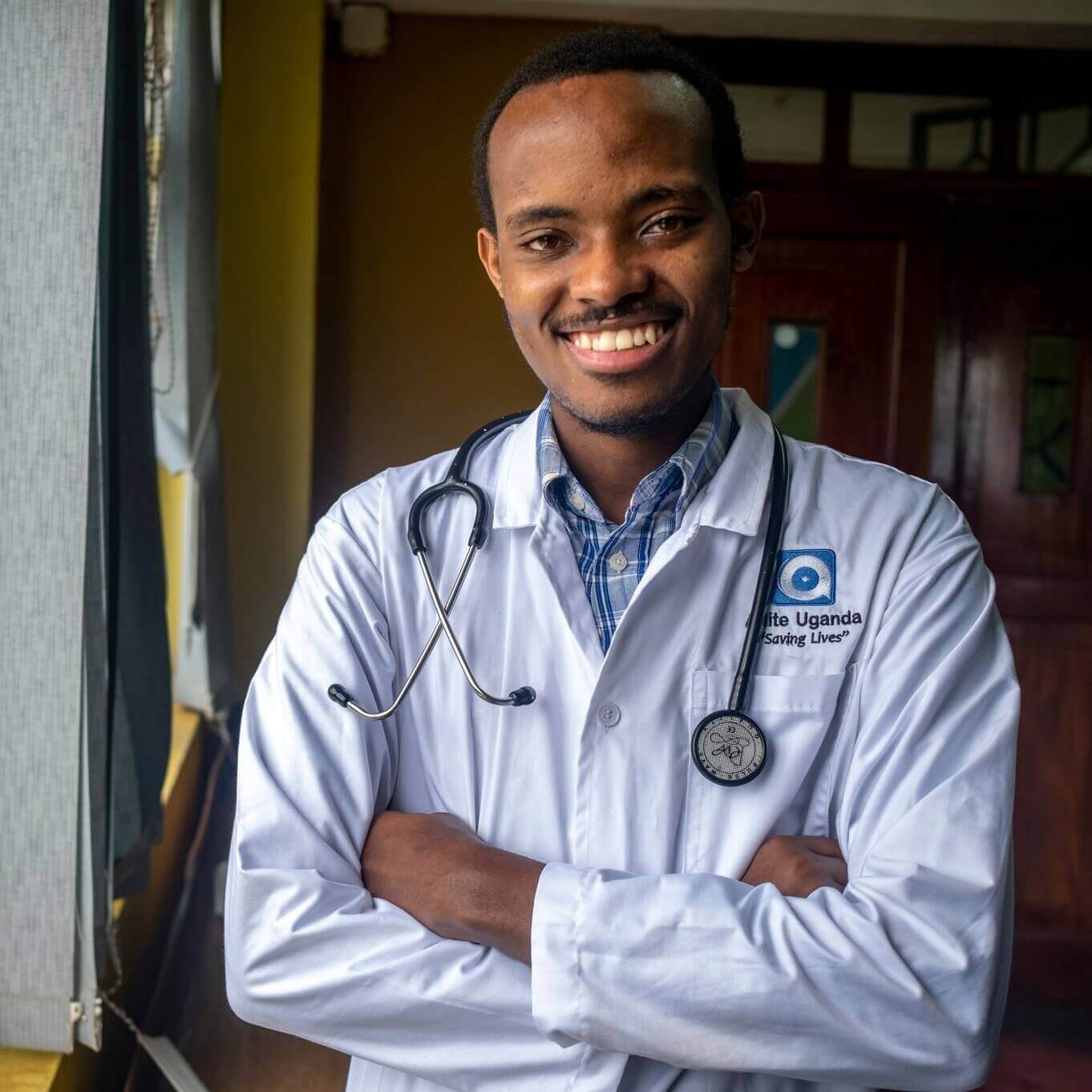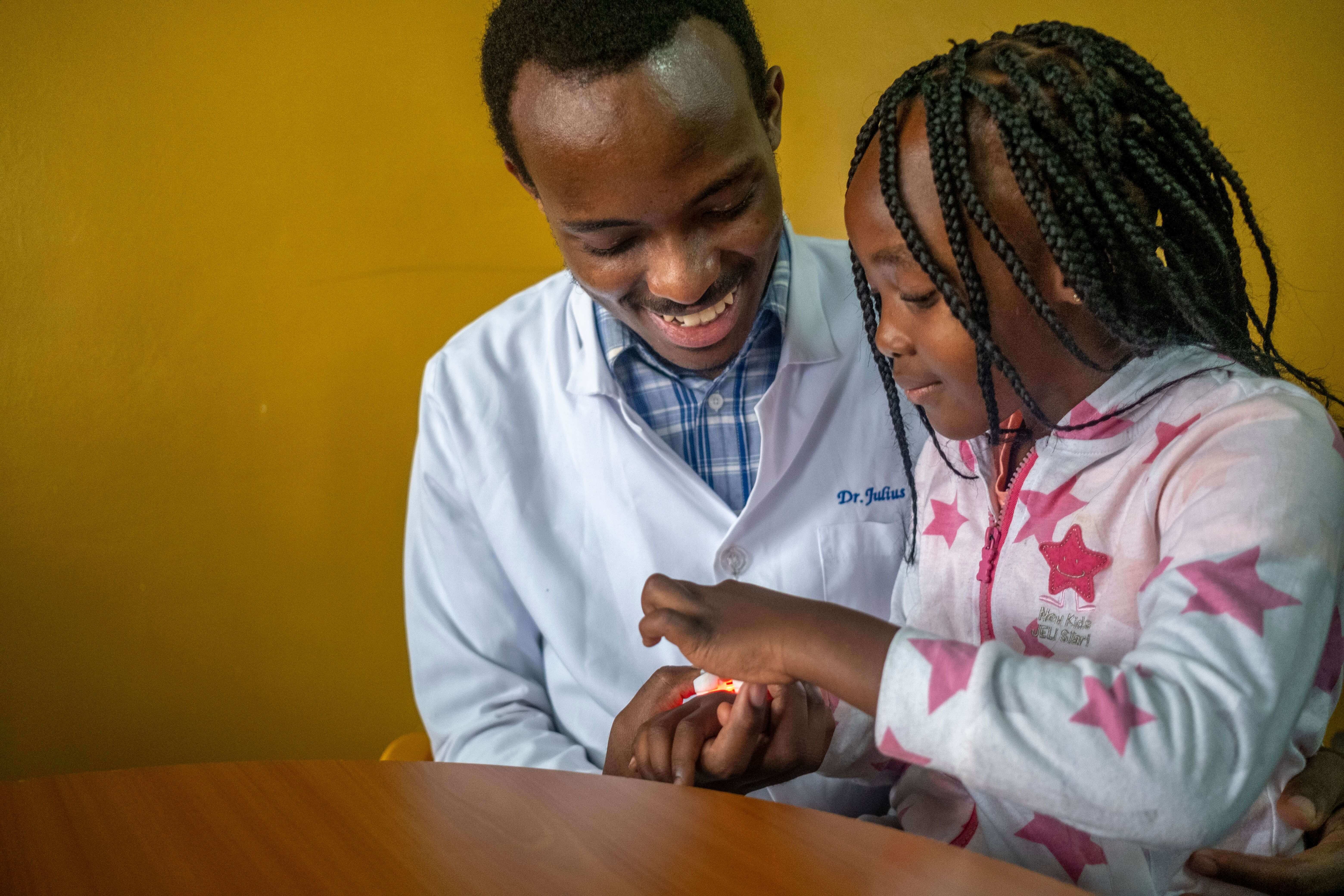Dr Julius Mubiru, a Ugandan doctor, and his team developed the device after seeing how difficult it is for medical staff to perform cannulations on young children, especially those with darker skin.
Researchers estimate that between 50 and 80% of children coming to hospital require intravenous cannulation - either to administer medicine or draw blood. Skin tone, medical conditions and simple dehydration can greatly diminish vein visibility, and repeated attempts at cannulation can cause trauma and delays, but also scarring and nerve injury.
In order to find a way to show medical staff where a child’s veins are, the team looked to the contents of human blood. The red blood cells in human blood contain a form of haemoglobin called deoxy-haemoglobin - haemoglobin without oxygen. This deoxy-haemoglobin absorbs red light, while human skin reflects it. So, when a red light is passed over a child’s skin, it reflects everywhere except where there are veins, because the deoxy-haemoglobin under the skin is absorbing it. This casts a shadow of lines on the skin, visibly mapping out the network of veins.
Dr Mubiru believes that having the device in hospitals and clinics will cut down on critical treatment time by getting medication administered quickly, reduce tissue trauma from multiple needle insertions, and greatly help children with collapsed or barely visible veins. While it was designed with children in mind, it works on patients of all ages.
The next step in the device’s development is to conduct clinical trials to confirm efficacy and safety, and measure its impact in a medical setting. While alternative devices for vein visualisation do exist, they are not widely available in sub-Saharan Africa due to prohibitive costs. Competitor research also showed that these devices are complex to use and maintain, and designed predominantly for medical facilities in developed and well-resourced countries.
Dr Mubiru hopes to make the A-Lite Vein Locator a standard piece of equipment at Uganda’s 6,000 facilities.

“While no one likes needles, vein visibility is not just an issue of comfort. We’d like to see far more of what’s called first-needle successes, where the vein is found on the first try, saving medical staff time, sparing children unnecessary trauma, and getting medicine to those who need it as quickly as possible.”
Dr Julius Mubiru


- Website: https://www.aliteuganda.com/
- LinkedIn: https://www.linkedin.com/company/a-lite-uganda-limited/
- Facebook: https://www.facebook.com/aliteuganda/
- Twitter: https://mobile.twitter.com/aliteuganda
